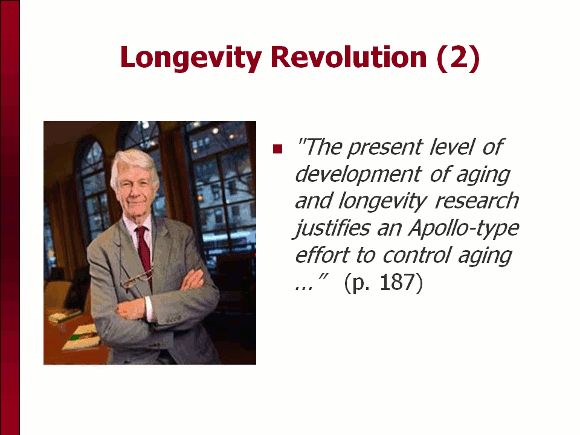Advocacy for longevity research is a balancing act informed by ongoing developments in raising funds, actual progress in the fields of interest, and the growth of the community of supporters. In an ideal world, these three factors will all advance steadily: an upward curve of success. In practice things are never that easy. A supportive community of a given size will only contribute so much in the way of resources: are those resources assigned to research, which tends to produce newsworthy results at irregular intervals in addition to actual progress, or to outreach and education? What will best grow the community so as to grow the resource pool of donations, and in turn help to achieve research goals more rapidly?
Life science research is an unreliable beast by its very nature: progress is unexpected and unpredictable, never as fast the news cycles these days, and costly. But the end goal of new medical technologies is the whole point of the exercise, and research is the only path to that goal. Without a steady flow of signs of incremental progress resulting from funded research, the community becomes discouraged, which in turn makes it harder to raise funds and bring in new faces. When a field is young and the research community comparatively small, a steady flow of signs of progress isn't a realistic expectation, however.
No-one said the early stages were going to be easy, of course. You have to lug the rocks uphill before you roll them back down to create the avalanche.
At the present time, meaningful longevity research (meaning anything based on the Strategies for Engineered Negligible Senescence, or taking place in the community connected to the SENS Foundation and Methuselah Foundation) is in an awkward stage of its growth. The comparatively small, enthusiastic community that helped these organizations launch and raise more than $10 million for prizes and research is more or less maxed out in terms of the resources its members will contribute on an ongoing basis. Meanwhile, the research is proceeding at the normal pace for modestly funded work - which is to say very slowly for people acclimatized to the short attention span of the modern news cycle.
Thus at present, it is more important than ever to grow the community. That way lies increased funding, which in turn can speed the advent of new research results that encourage support for the cause. All of the organizations involved in advocacy for longevity research are engaged in efforts to grow the community of supporters in one way or another. The SENS Foundation, to pick one example, is laying the groundwork for the next generation of the research community itself via the Academic Initiative. Aubrey de Grey meanwhile is a tireless presenter and persuader, who has for years taken the message that longevity science is achievable to movers and shakers around the world. This is old fashioned persuasion at its best: make sure as many people as possible have the chance to think over what you have to say, and encourage those who want to join in and help.
More of the old fashioned persuasion of movers and shakers is in evidence at the LifeStar Institute, whose founders are engaged in the process of pulling together a global initiative to pour funds into longevity science. This is the path of conferences, presentations, position papers, and a great deal of networking. So the thinking goes, bringing a great many people around to your view of the world is best accomplished by persuading the nodes in the social network: the thought leaders and other influential folk. They in turn will help you spread the message and gather new supporters.
The Methuselah Foundation is trying a more directly populist path at present in conjunction with the recently launched New Organ Prize. The aim here appears two-fold: firstly regenerative medicine and tissue engineering enjoys widespread public support and comprehension. By establishing itself as a leader in the tissue engineering space through a research prize - just as it has for the aging research space via the Mprize - the Foundation can ensure that a great many people come to see that regenerative medicine and organ engineering are just one part of a larger technological battle against degenerative aging. Some will step up and do their part to help.
Secondly, the Methuselah Foundation is supporting the growth of broad patient support and advocacy groups via My Bridge 4 Life, a social network startup which focuses on helping people fight and survive life-threatening diseases. For example, the New Organ Network is a My Bridge 4 Life-enabled social network for folk who need organ transplants, their supporters, and their friends. The community is geared towards encouraging the growth of the NewOrgan Prize and participation in accelerating progress towards the goal of organs built to order through tissue engineering.
Very few people think about their own mortality and what to do about it. But if you're suffering from a potentially fatal condition, it's hard to avoid all those considerations - your future just became very compressed, and you're forced to deal with it right here and right now, with no fuzzy thinking or head stuck in the sand. With the help of a will to live, modern technology, and support communities, many people put in this unenviable position survive - and it is possible that their perspectives on life may be turned to the fact that they have won one battle, but are still threatened by aging, the root of all the waiting age-related conditions that lie ahead. Teaching cancer survivors, organ recipients, and other survivors that this next fight against aging awaits - and that it it will be hard, but it there is a way to win it - is a plausible path to finding many more supporters of longevity science.
